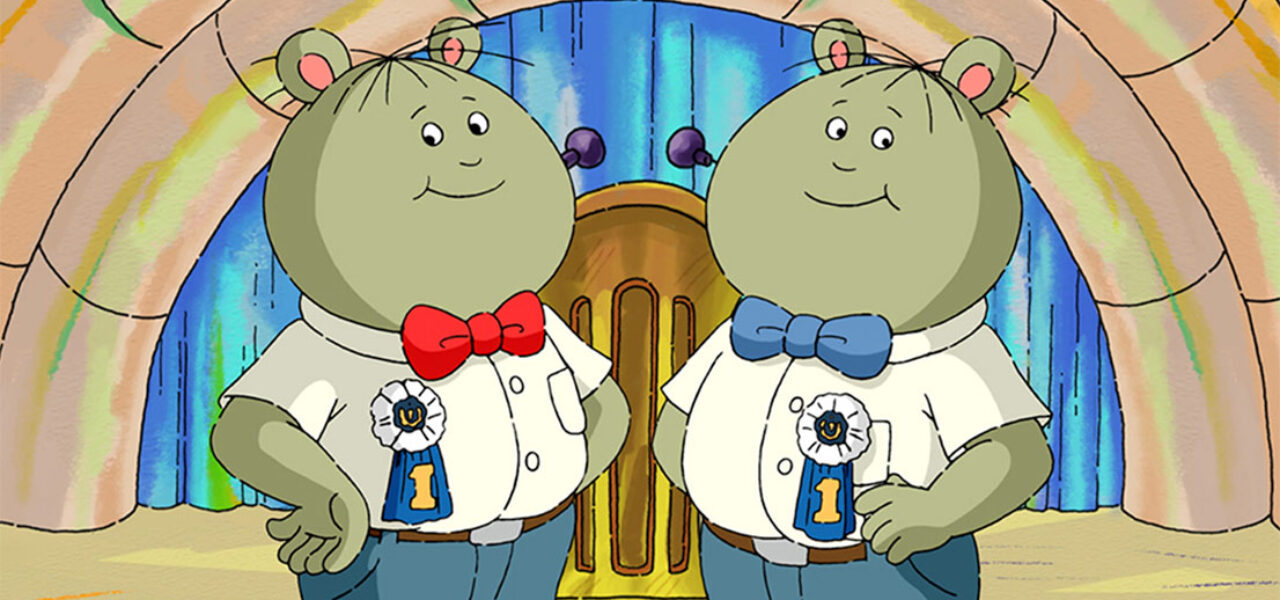

Montreal’s Oasis Reaches Deal With Its Animation Workers Union
Members of Canada’s first-ever accredited animation union have reached a groundbreaking agreement with their employer, Montreal’s Oasis Animation. It address matters such as pay, seniority, and transparency around worker evaluations.
The deal covers 22 members of Oasis’s in-house animation team, including 2d, 3d, fx, and lead animators (other workers at the studio are not unionized). It was approved by a majority of the Oasis Animation Workers Union’s members following a general meeting on Wednesday, and will come into force in the coming days.
The animators will now have a clear salary structure, and regular evaluations to ensure that wages reflect skill levels and job titles, union president Tamarind King tells Cartoon Brew. Salaries will improve and there will be annual raises. The studio says the agreement lets it continue to operate in an optimal manner.
Founded in 2003, Oasis is a service studio specialized in 2d animation production. Series it has worked on include Netflix’s F Is for Family and Kulipari, and PBS’s Arthur. The Oasis Animation Workers Union was launched in November 2019 through the labor organization CSN (Confederation of National Trade Unions).
“The animators didn’t want to harm Oasis [by unionizing],” says King. “They mainly wanted to reach an agreement that would make sure the artists would be treated fairly, while also allowing Oasis to do well as a company. I’m really excited because, even though the agreement isn’t perfect, I think we were able to reach that goal.”
Oasis president Jacques Bilodeau also expressed satisfaction in a statement: “We are pleased by this outcome of the negotiations, and by the knowledge that we can count on the support of our talented people to pursue Oasis’s growth in a national and international context, while helping to make Montreal a hub for the animation industry.”
In mid-April, as the contract was being negotiated, members of the union protested outside the studio, accusing it of moving too slowly and acting in bad faith. However, the studio stresses that discussions have been respectful and transparent.
The result is a breakthrough for the animation industry in Canada, which remains largely unorganized (although workers at Titmouse Vancouver recently took a big step in this direction). Even as the country’s animation production booms, labor conditions remain poor in many cases, says King, citing the lack of job security and prevalence of unpaid overtime.
Some Canadian studios still pay animators by the frame, a sweatshop tactic that is also common in Asia, which means animators are not paid for overtime and often have to work crunch hours just to make a living wage. Oasis was ahead of the curve, and had already ended that practice, switching to an hourly salary structure even before the unionization efforts started.
The agreement between Oasis and its animators is unprecedented in Canada’s industry, and could set a new standard for collaboration between studio and worker across North America. On top of the concrete changes, says King, “I think we were also able to gain more respect and have our voices heard. By unionizing, we were able to have a say in our own working conditions, and open the conversation on a level field with our employer.”
Image at top: “Arthur”

.png)

